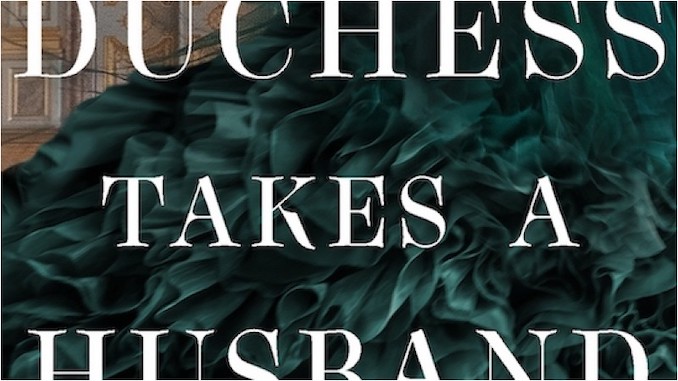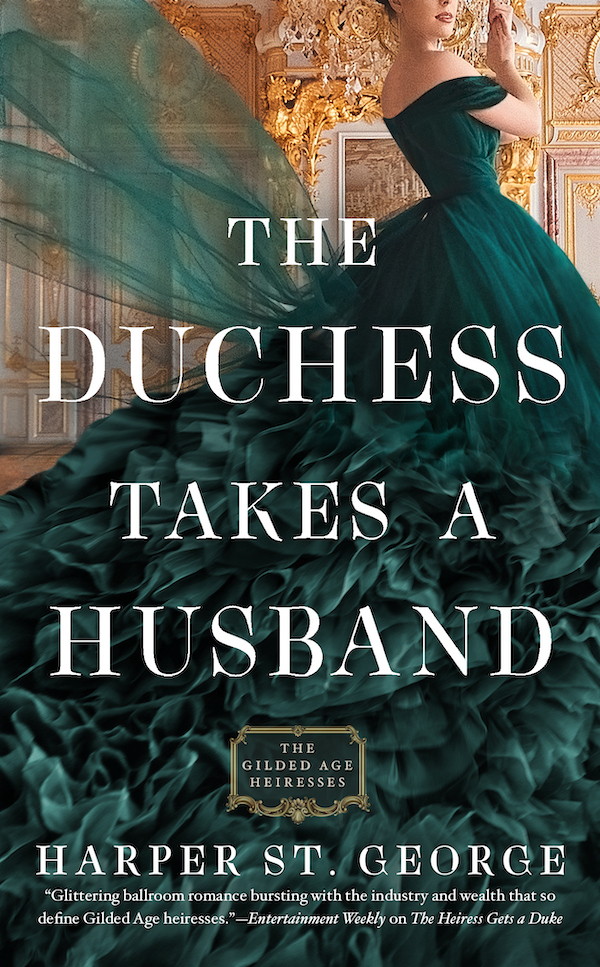Exclusive Cover Reveal + Interview: The Duchess Takes a Husband Continues Harper St. George’s Gilded Age Heiresses Series

Romance hasn’t just been having a moment — it can really be described as the moment, especially given its staying power in publishing, and in terms of all the subgenres through which we get our love stories, it’s clear that historicals are here to stay. But the beauty of even historical romances is that they can be set across the backdrop of some of the most fascinating and differing eras of our past. There’s the Regency, of course, as well as the medieval era and anything involving Scottish highlanders, but these days, the Gilded Age (which spanned approximately between the years 1870 to 1900) is starting to emerge as a period through which to tell tales of people falling in love.
This development in economic prosperity is where Harper St. George’s Gilded Age Heiresses books, which follow the independent and determined women the series is named for, are set. Not only do they have to navigate the intricacies of society, but they also face scorn and potential ostracization thanks to the fact that they come from “new” money, rather than anything that can be tied to an inheritance. Then again, the heiresses themselves are hardly eager to marry into the stuffy British aristocracy, either — and the conflicts that result between what is considered a duty versus matters of the heart are as exciting and stirring as St. George’s prose.
With The Duchess Takes a Husband, there’s a new heroine on the cusp of love: Camille, the titular duchess herself, who hardly has a leg to stand on in society in spite of her title. However, when she crosses paths with the intriguing Jacob Thorne, an illegitimate son and co-owner of a club that practically invites scandal, she approaches him with a surprising proposition. (Those of us who love romance to our bones will know where this fake engagement + tutelage in pleasure conceit is headed!)
Here’s how the publisher describes the story:
Despite her illustrious title, Camille, Duchess of Hereford, remains what she has always been—a pariah. Though her title means she’s technically accepted by London Society, the rebellious widow with her burgeoning interest in the suffrage movement and her American ways isn’t exactly high on every hostess’s guest list. But Camille starts to wonder if being an outcast is not without its perks when the tantalizing answer to her secret fear appears in the shape of Jacob Thorne, the illegitimate son of an earl and co-owner of London’s infamous Montague Club.
Jacob is used to making deals with his club members—he’s just not accustomed to them being beautiful women. Nor have the terms ever been so sweetly seductive as Camille’s shocking proposition. To finally buy his own club and gain the crucial backing of investors, Camille offers Jacob the respectability of a fake engagement with a duchess. In return, the tempting widow has one condition: she wants Jacob to show her if it’s possible for her to experience pleasure in bed.
The lure of such a bargain proves too delicious to resist, drawing the enterprising rogue and the wallflower duchess into a scandalous game and an even more dangerous gamble of the heart.
The Duchess Takes a Husband will be released on April 11, 2023, but we’re so excited to be able to exclusively reveal the cover to you right now—along with an interview with St. George herself, who can preview what’s to come from Camille and Jacob’s romance, what drove her to set her popular historical series in the Gilded Age, which real-life figures from history inspired her characters, and more!

![]()
Paste Magazine: What made you want to set these novels in the Gilded Age specifically? What was it about the time period itself that appealed to you?
-

-

-

-

-

-

-

-

-

-

-

-

-

-

-

-

-

-

-

-

-

-

-

-

-

-

-

-

-

-

-

-

-

-

-

-

-

-

-

-








































